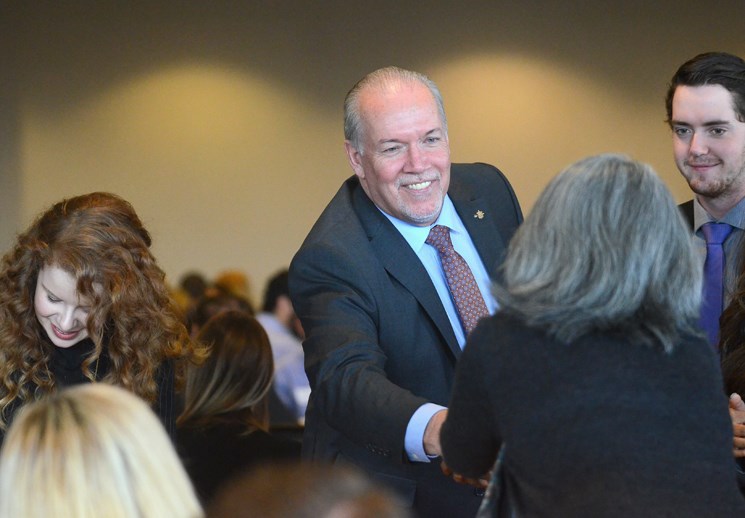Premier John Horgan was given a rousing welcome by delegates to the annual CUPE convention last week, but I have to wonder whether that’s going to be as good as it gets for the premier and his government when it comes to dealing with public sector unions.
That’s because the NDP government will open contract negotiations this year with a vast array of those unions. There are more than 310,000 unionized public employees in B.C. whose collective agreements (about 180 of them) expire next spring, and there are another 75,000 managers in the public sector.
There is no question public sector union leadership and the membership will be looking for substantially more money at the negotiating table than they received from B.C. Liberal administrations in recent years. The frugal Liberals established a “net zero” bargaining mandate in 2010 that stipulated there could be no increase in compensation unless savings were found to pay for it. That was followed by the “cooperative gains” mandate in 2012 that allowed modest wage hikes that were again tied to found savings. Then, in 2014, came the “economic stability” mandate that allowed a maximum of 5.5 per cent in total wage hikes over five years plus a small economic “dividend” tied to an improving economy.
Enter the NDP, and the expectations from the public sector unions are understandably pretty high now that the days of wage restraint are over.
There’s just one problem: there is not a lot of money in the public treasury to fund significant wage hikes for public sector employees.
A rule of thumb in the finance ministry is that a tiny one per cent hike across the public sector costs the government close to $300 million. A two per cent bump costs $600 million, and so on. So, let’s say the unions come looking for a two per cent hike a year over three or four years. Sounds modest enough, unless you are the employer.
That kind of compensation package would cost the government $3.6 billion over three years (the first $600 million increase becomes embedded and is counted again in years two and three, as does year two’s $600 million in year three).
Finance Minister Carole James doesn’t have a lot of flexibility at her disposal. Over the next two years, her fiscal plan shows she has $2.6 billion in unallocated spending. Presumably the budget three years from now will have the usual $1.3 billion in unallocated spending, which brings the total to $3.9 billion.
That modest two per cent annual increase would consume almost all that money. So James is likely going to hold the line at lower wage hikes, which may infuriate public sector workers.
And that’s why the premier may not get that prolonged standing ovation when he attends those union conferences next year.
Keith Baldrey is chief political reporter for Global B.C.



